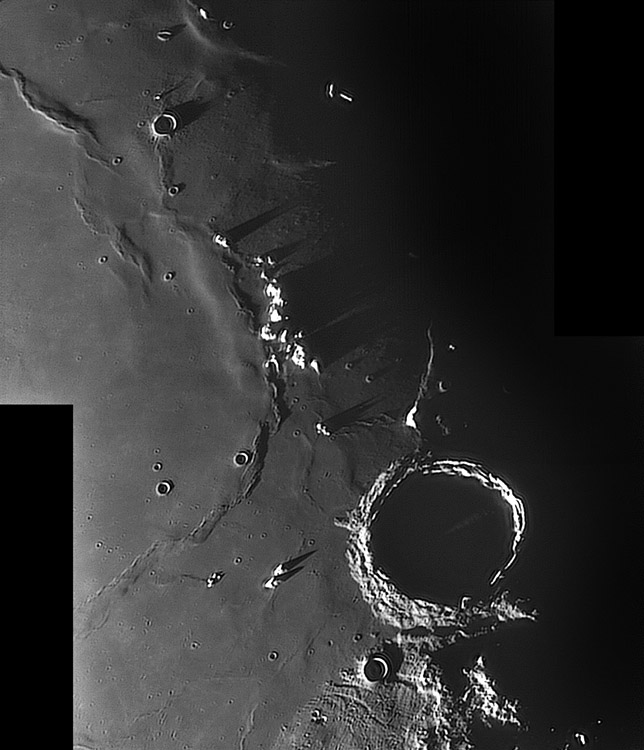Difference between revisions of "November 6, 2013"
| Line 1: | Line 1: | ||
__NOTOC__ | __NOTOC__ | ||
=A Stiletto's Gap And Archimedes' Bench= | =A Stiletto's Gap And Archimedes' Bench= | ||
| − | |||
<!-- ws:start:WikiTextHeadingRule:0:<h1> --> | <!-- ws:start:WikiTextHeadingRule:0:<h1> --> | ||
<!-- ws:start:WikiTextLocalImageRule:6:<img src="/file/view/LPOD-Nov6-13.jpg/466445708/LPOD-Nov6-13.jpg" alt="" title="" /> -->[[File:LPOD-Nov6-13.jpg|LPOD-Nov6-13.jpg]]<!-- ws:end:WikiTextLocalImageRule:6 --><br /> | <!-- ws:start:WikiTextLocalImageRule:6:<img src="/file/view/LPOD-Nov6-13.jpg/466445708/LPOD-Nov6-13.jpg" alt="" title="" /> -->[[File:LPOD-Nov6-13.jpg|LPOD-Nov6-13.jpg]]<!-- ws:end:WikiTextLocalImageRule:6 --><br /> | ||
| − | <em>image by [mailto:jupiter182002@yahoo.ca/ Maximilian Teodorescu], Dumitrana (Ilfov), Romania</em><br /> | + | <em>image by [mailto:jupiter182002@yahoo.ca/" rel="nofollow Maximilian Teodorescu], Dumitrana (Ilfov), Romania</em><br /> |
<br /> | <br /> | ||
| − | One of the most fascinating things to observe on the Moon is the rising or setting of the Sun across a mare. As the terminator moves across a generally smooth surface every bump shows up. Here on the eastern edge of Mare Imbrium the isolated [http://the-moon.wikispaces.com/Montes+Spitzbergen Spitzbergen Mountain range] casts stiletto-like shadows that noticeably lengthen or shorten over an hour at the eyepiece. At upper right, sticking up from the first darkness of a coming 14 day lunar night is the roughly T-shaped [http://lpod.wikispaces.com/May+28%2C+2010 Piton Gamma] peak that may be part of an Imbrium inner ring. Near bottom center, just west of shadow-filled [http://the-moon.wikispaces.com/Archimedes Archimedes], is the peak Archimedes Zeta, a designation given by Mädler 180 years ago, that has shadows showing that it is twinned peaked. An inverse shadow - both in the direction of its tip and in being bright rather than dark - crosses the floor of Archimedes. The light is leaking through a low spot of the crater's western rim - the LRO altimetry data show the [http://bit.ly/1ei2D9o low spot] is about 650 m lower than adjacent normal rim heights. Finally, at the bottom center the low illumination emphasizes the sharp boundary between the mare lavas and the older [http://adsabs.harvard.edu/full/1978LPSC....9.3379S Archimedes Bench Formation]. LRO altimetry shows that the boundary is due to an abrupt steepening of slope. The flat-lying lavas flowed up against the rising Bench and could go no further.<br /> | + | One of the most fascinating things to observe on the Moon is the rising or setting of the Sun across a mare. As the terminator moves across a generally smooth surface every bump shows up. Here on the eastern edge of Mare Imbrium the isolated [http://the-moon.wikispaces.com/Montes+Spitzbergen Spitzbergen Mountain range] casts stiletto-like shadows that noticeably lengthen or shorten over an hour at the eyepiece. At upper right, sticking up from the first darkness of a coming 14 day lunar night is the roughly T-shaped [http://lpod.wikispaces.com/May+28%2C+2010 Piton Gamma] peak that may be part of an Imbrium inner ring. Near bottom center, just west of shadow-filled [http://the-moon.wikispaces.com/Archimedes Archimedes], is the peak Archimedes Zeta, a designation given by Mädler 180 years ago, that has shadows showing that it is twinned peaked. An inverse shadow - both in the direction of its tip and in being bright rather than dark - crosses the floor of Archimedes. The light is leaking through a low spot of the crater's western rim - the LRO altimetry data show the [http://bit.ly/1ei2D9o" rel="nofollow low spot] is about 650 m lower than adjacent normal rim heights. Finally, at the bottom center the low illumination emphasizes the sharp boundary between the mare lavas and the older [http://adsabs.harvard.edu/full/1978LPSC....9.3379S" rel="nofollow Archimedes Bench Formation]. LRO altimetry shows that the boundary is due to an abrupt steepening of slope. The flat-lying lavas flowed up against the rising Bench and could go no further.<br /> |
<br /> | <br /> | ||
| − | <em>[mailto:tychocrater@yahoo.com Chuck Wood]</em><br /> | + | <em>[mailto:tychocrater@yahoo.com" rel="nofollow Chuck Wood]</em><br /> |
<br /> | <br /> | ||
<strong>Technical Details</strong><br /> | <strong>Technical Details</strong><br /> | ||
| Line 15: | Line 14: | ||
<strong>Related Links</strong><br /> | <strong>Related Links</strong><br /> | ||
<em>[http://lpod.wikispaces.com/21st+Century+Atlas+of+the+Moon 21st Century Atlas]</em> chart 18.<br /> | <em>[http://lpod.wikispaces.com/21st+Century+Atlas+of+the+Moon 21st Century Atlas]</em> chart 18.<br /> | ||
| − | Max's [http://maximusphotography.wordpress.com/2013/03/30/colaj-lunar-2-octombrie-2012/ website]<br /> | + | Max's [http://maximusphotography.wordpress.com/2013/03/30/colaj-lunar-2-octombrie-2012/" rel="nofollow website]<br /> |
<br /> | <br /> | ||
<hr /> | <hr /> | ||
Revision as of 22:52, 4 January 2015
A Stiletto's Gap And Archimedes' Bench

image by " rel="nofollow Maximilian Teodorescu, Dumitrana (Ilfov), Romania
One of the most fascinating things to observe on the Moon is the rising or setting of the Sun across a mare. As the terminator moves across a generally smooth surface every bump shows up. Here on the eastern edge of Mare Imbrium the isolated Spitzbergen Mountain range casts stiletto-like shadows that noticeably lengthen or shorten over an hour at the eyepiece. At upper right, sticking up from the first darkness of a coming 14 day lunar night is the roughly T-shaped Piton Gamma peak that may be part of an Imbrium inner ring. Near bottom center, just west of shadow-filled Archimedes, is the peak Archimedes Zeta, a designation given by Mädler 180 years ago, that has shadows showing that it is twinned peaked. An inverse shadow - both in the direction of its tip and in being bright rather than dark - crosses the floor of Archimedes. The light is leaking through a low spot of the crater's western rim - the LRO altimetry data show the " rel="nofollow low spot is about 650 m lower than adjacent normal rim heights. Finally, at the bottom center the low illumination emphasizes the sharp boundary between the mare lavas and the older " rel="nofollow Archimedes Bench Formation. LRO altimetry shows that the boundary is due to an abrupt steepening of slope. The flat-lying lavas flowed up against the rising Bench and could go no further.
" rel="nofollow Chuck Wood
Technical Details
October 27, 2013. C11@F/25, ASI120MM, IR-pass filter (685nm). CAW over-enhanced Max's image to highlight the shadow features.
Related Links
21st Century Atlas chart 18.
Max's " rel="nofollow website



